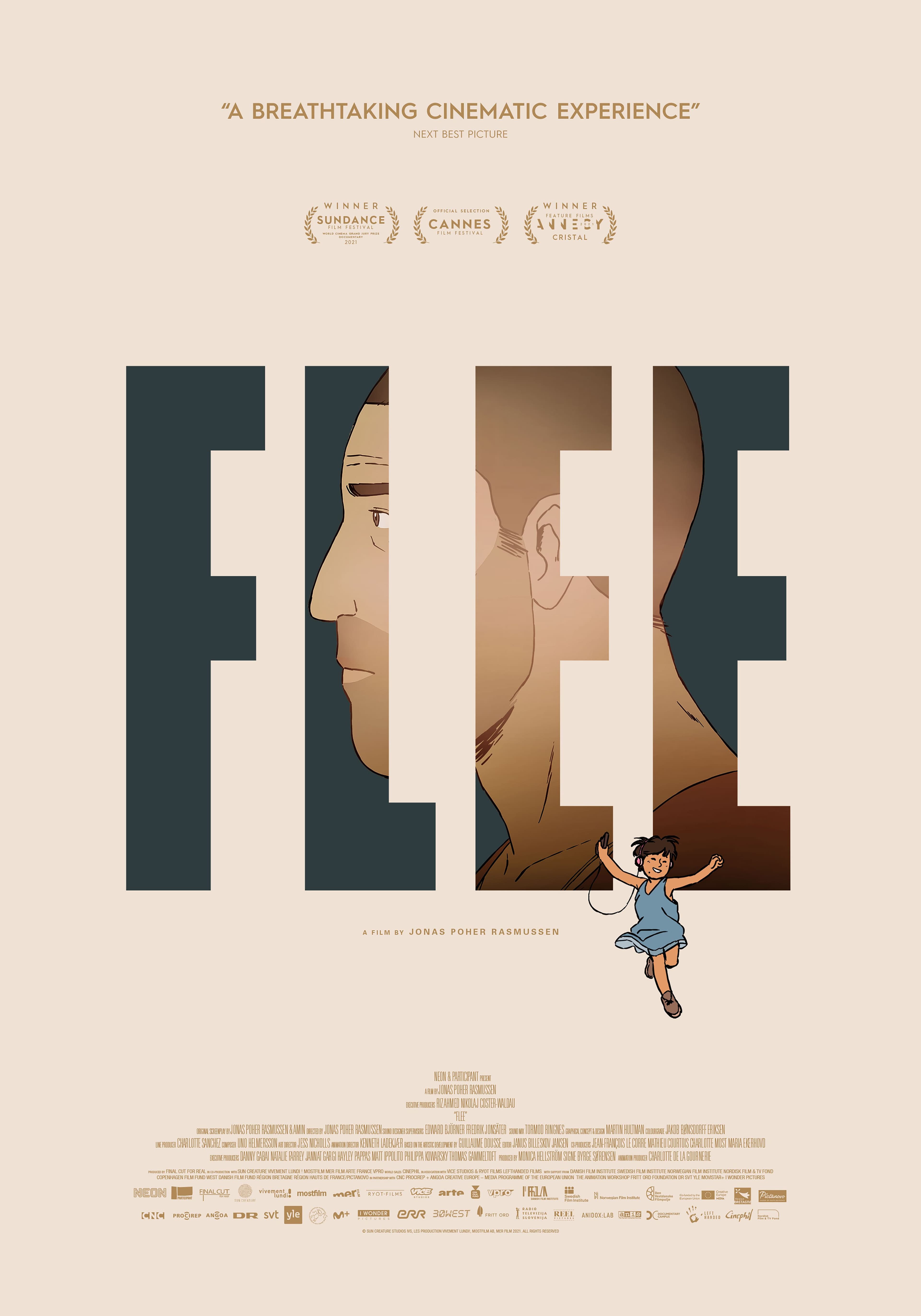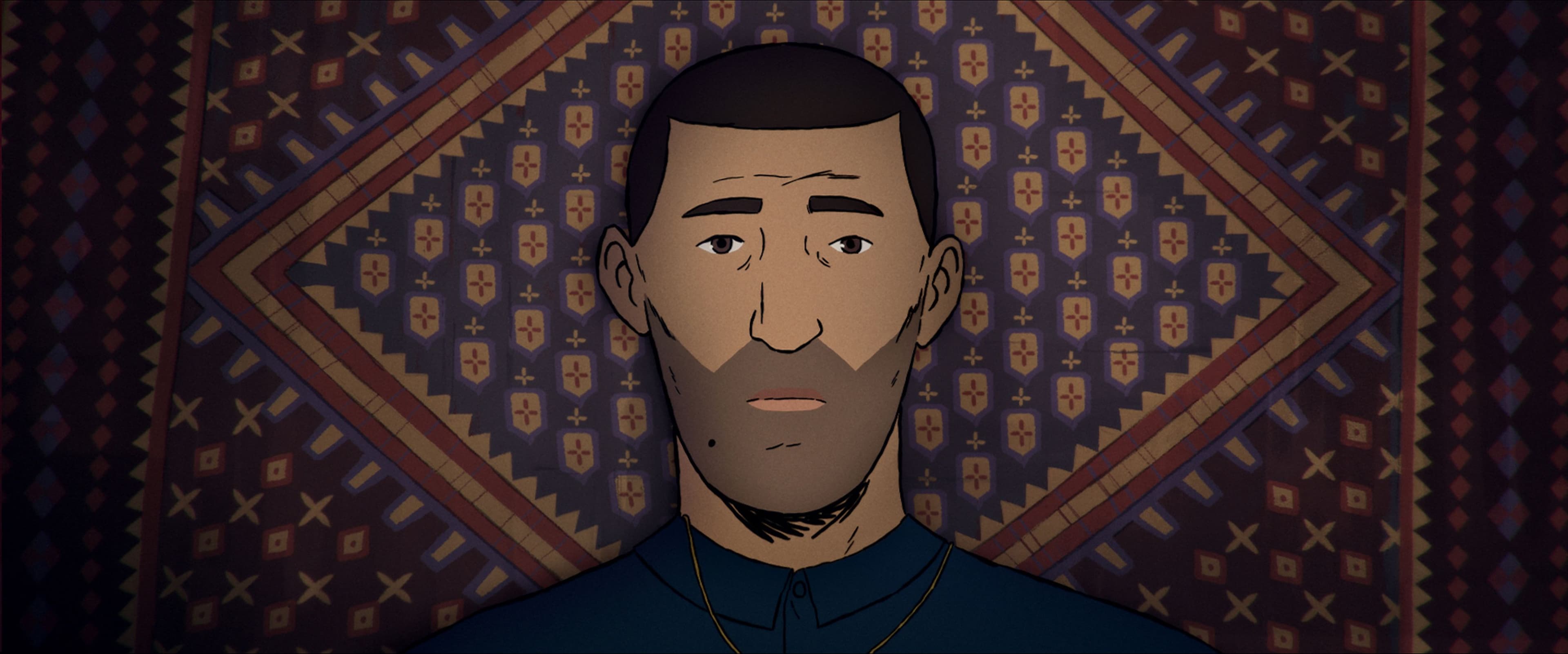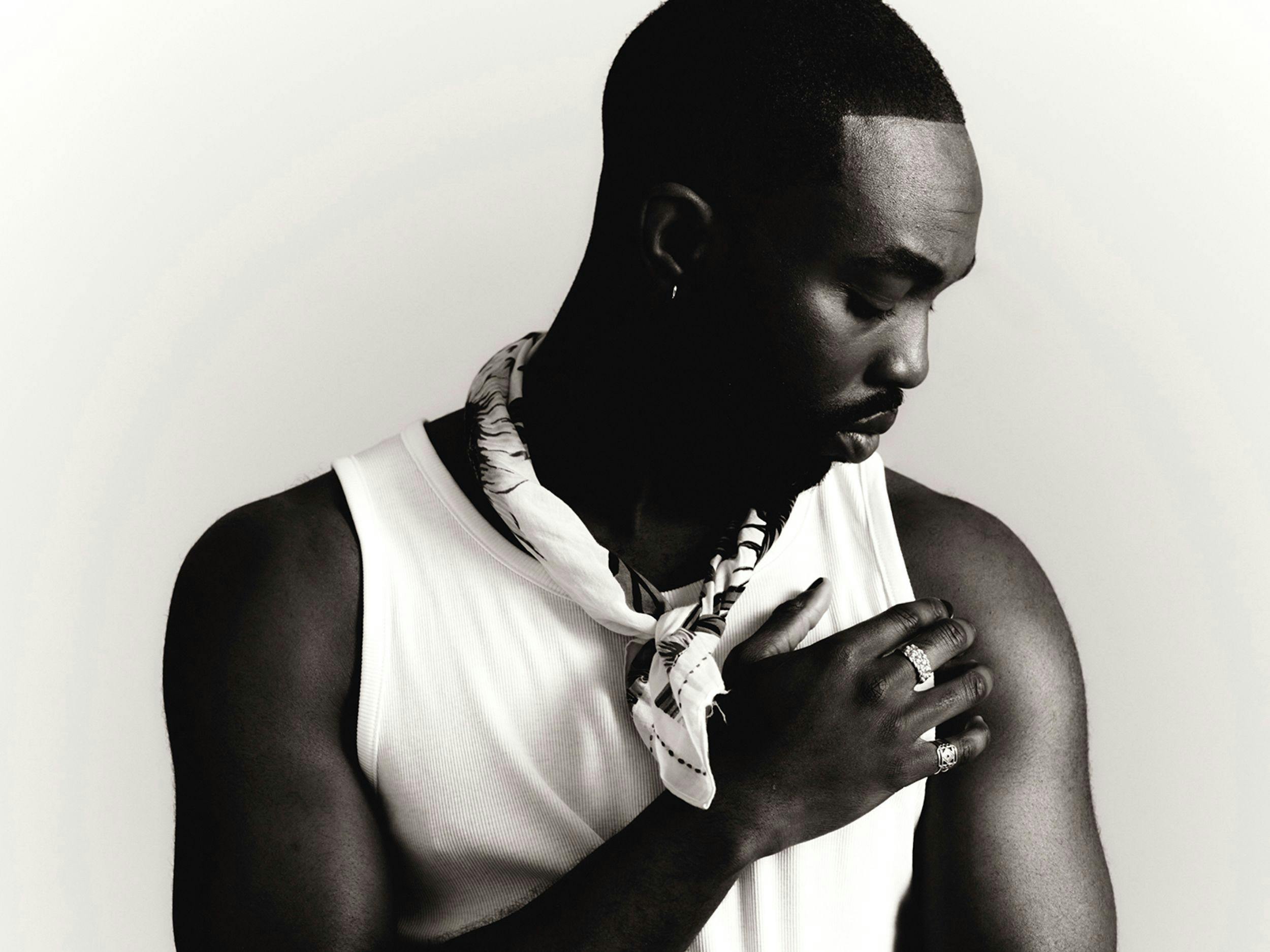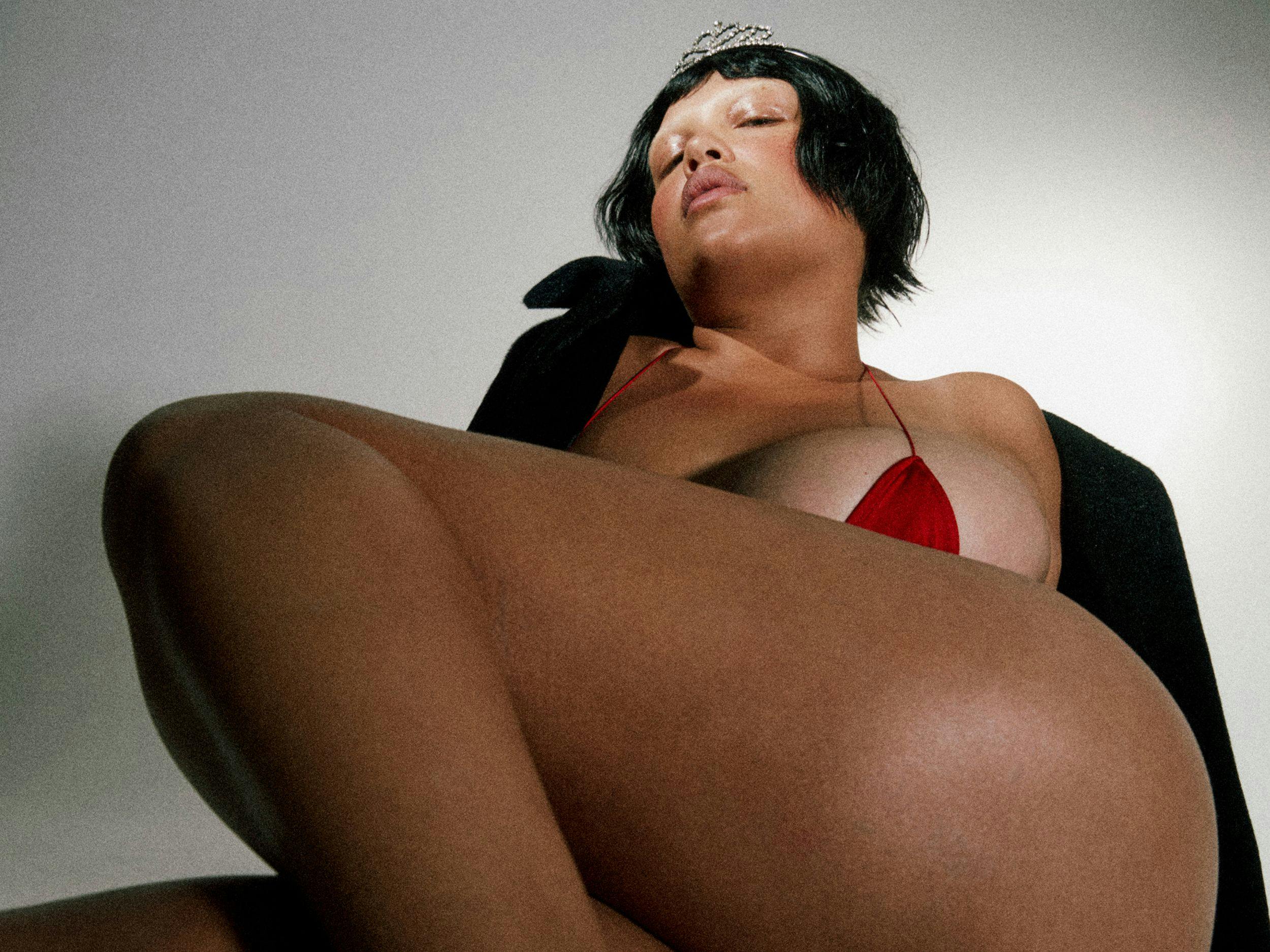
Drawing the Past Into the Present
It can be difficult to reckon with your past—even more so when you’ve been told to deny it or risk your safety. In Flee, the new documentary by Jonas Poher Rasmussen, the stakes are high for Amin (pseudonym), who left Afghanistan as the mujahideen took over in the eighties, endangering his family given his father’s ties to the previous government. Through emotionally charged animation, he recounts his story as he escapes with his family first to Moscow. From there, they are forced to separate, each making their own way to reunite with a brother in Sweden. On Amin’s second attempt to enter Europe, smugglers instruct him to claim his family is dead to qualify for asylum and he comes short of his final destination, ending up in Denmark.
Rasmussen didn’t know any of these details when he first met Amin—their friendship began when Amin suddenly appeared in Rasmussen’s small Danish village as an Afghan refugee living in foster care, and the two teenagers bonded as they rode the bus to high school together daily. “Already back then, I was curious about how and why he had gotten to Denmark, but he just didn’t want to talk about it,“ recalls Rasmussen, now forty years old. “The curiosity was always there, so during the twenty-five years we’ve known each other, it’s kind of been this gap. I had this very good friend, but I didn’t really know what shaped him.“
Ultimately, it would take several more years until Amin was comfortable revisiting the painful journey that led him to flee his home country. Rasmussen initially approached his friend around fifteen years ago with the idea of doing a radio documentary to protect his privacy, but it was still too soon. It wasn’t until Rasmussen had the idea for an animated documentary around eight years ago Amin decided he was ready.
In Flee, Rasmussen has found the perfect medium for telling Amin’s story. The animated format allows audiences to be transported through old memories of Amin’s journey that were not caught on film and grants him complete anonymity, protecting both himself and his family. “That’s what enabled him to say, ’Okay, this is the right way to do it,’“ adds Rassmussen. “It’s really hard for him to talk about it still, so the fact if you meet him in the street we wouldn’t recognize him and know about his innermost secrets about his traumas and then make small talk about it, that really freed him up to say, ’Ok, this I can do.’“
The animation also gives the opportunity to display the emotions Amin felt during scenes where he wasn’t present, like when his sisters attempted to cross into Sweden in a shipping container on a transport boat during a treacherous storm. “He wasn’t there, he wouldn’t know what it would look like, but his emotion is there,“ says Rasmussen. “The fear of being a twelve-year-old boy knowing that his sisters are stuck in a container and then trying to show that. This felt more honest in trying to share something that he actually didn’t know about.“
In anticipation of creating the film, Rasmussen recorded Amin in interviews and in daily life to create references for the animators. Compiled from over twenty hours of footage, Flee recounts Amin’s journey, stretching from his fleetingly happy childhood in Afghanistan to the present day as he hunts for a new home in the Danish countryside with his soon-to-be husband. Not only does he share his difficulties as a refugee, but also his experience coming to terms with his sexuality as a gay man, not easily accepted in Afghan culture. His past and present are at odds with each other in the film as his old traumas hold space in his new relationship, but as Amin begins to share his experiences, it finally allows him some peace. “I think at some point in time, he realized that in keeping a secret you keep people at a distance all of the time because you’re afraid of getting exposed. What’s really meaningful is close relationships, and he couldn’t really have those,“ says Rasmussen. “He just couldn’t really make his past and present mix. It was always kind of separate, so to feel more like a whole person and to bring this past with him and be able to talk about it whenever he wanted to, he really needed to get it out there.“

In the scenes where Rasmussen interviews his friend, Amin can be seen lying comfortably on his back facing upwards to the camera in a setup remarkably similar to the classic image of therapy. “This interviewing technique is a technique I learned in radio in Denmark,“ he explains. “Because you don’t have a picture, you need to be very descriptive. It gave us a lot of material for the animators to work with because every time we would start an interview, I would ask him, ’What’s the location, what did the room look like, what did the furniture look like, describe the walls, what do you see outside the window?’ It gave us a lot of information to animate from, but it would also bring him back to a specific situation and he would start to remember new memories.“
As Rasmussen explains, the resemblance between his interview technique and a therapy session was coincidental. “It looks like a therapeutic situation, but it wasn’t thought out like that in the very beginning. I didn’t actually realize until we started shooting that this was therapeutic for him,“ he says. “He said that he actually didn’t care whether this film would be made or not, but for him to be there and sharing his story was going to be therapeutic for him. Maybe it was a little naïve, but I didn’t realize until then that this was what we were doing–for me, it was really about creating the right environment to share a story and create presence.“
Premiering first at the Sundance Film Festival, Flee has delighted critics and audiences as it continues to gain momentum internationally. After winning multiple awards across dozens of festivals, Flee has been shortlisted for Best International Film and Best Documentary Feature at the Oscars. An English-dubbed version recorded by executive producers Riz Ahmed and Nikolaj Coster-Waldau has also been released. When asked why he believes this film resonates across so many audiences, Rasmussen points to the humanity in his friend’s story. “The film is called Flee, it’s about the flight from Afghanistan to Denmark, but it’s also about a guy who’s fleeing himself, who can’t be himself,“ he says. “In his youth, it was not being able to be gay in Afghanistan, and then when he arrived in Denmark, he couldn’t be honest to his past, so this notion of looking for a place in the world where you can be who you are with everything that entails, I think that’s something that everyone goes through at some point in their life, looking for that place where you feel like, ’Here I can be who I am with everything.’ I think that’s why it resonates with people because they can relate to the search for a home.“
Amin, who received a writing credit on Flee, has been touched by the response to the film. After being involved with the narrative from script to the final edit, Rasmussen says that his friend was moved after his first viewing but was unsure if it was because of the film itself or from seeing his story on screen. “When the film premiered at Sundance, he was nervous,“ says Rasmussen. “I think being double marginalized, being both gay and a refugee, he wasn’t sure if people would be able to relate. So the fact that it really resonated with people and we got such positive feedback on it meant a lot to him.“ Rasmussen has also been moved by the film’s success, especially given its status as a niche project. “You make a story, and it really came from our friendship, which is as local as it can be,“ he explains, “and then you think hopefully it will work in Denmark, and then maybe in Scandinavia as well, then maybe Europe, and then now you see, ’Okay, well it actually works globally.’ It’s amazing.“
Flee is out now.
As a nonprofit arts and culture publication dedicated to educating, inspiring, and uplifting creatives, Cero Magazine depends on your donations to create stories like these. Please support our work here.






